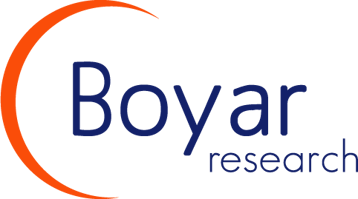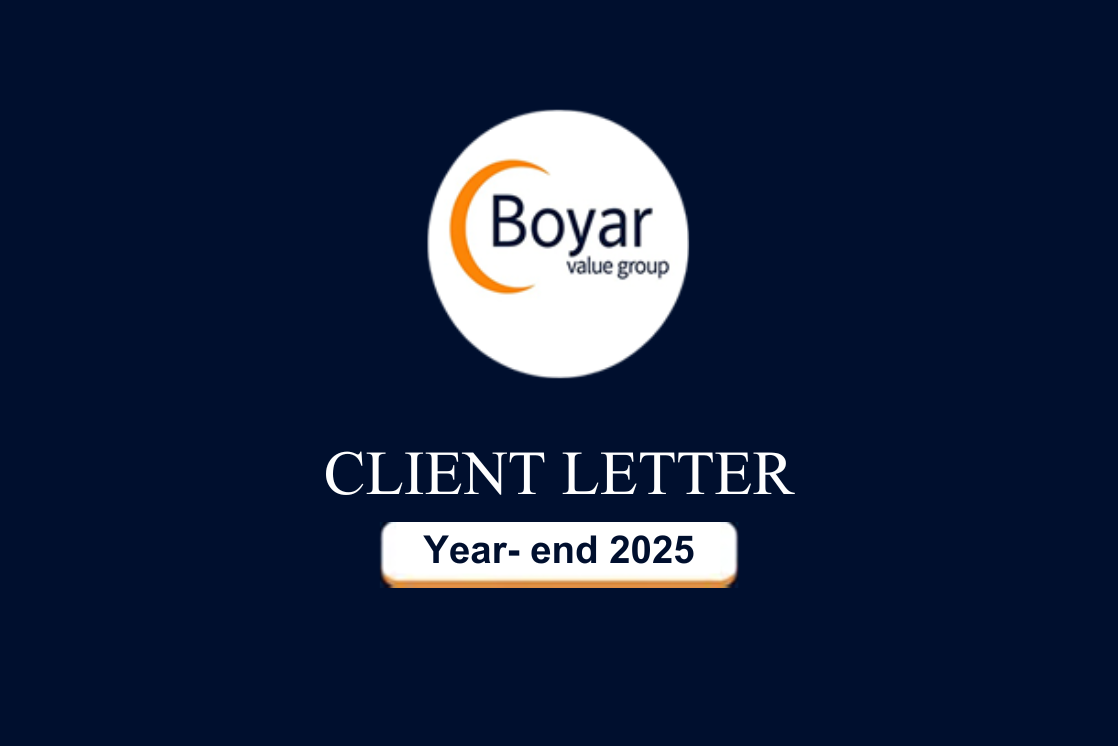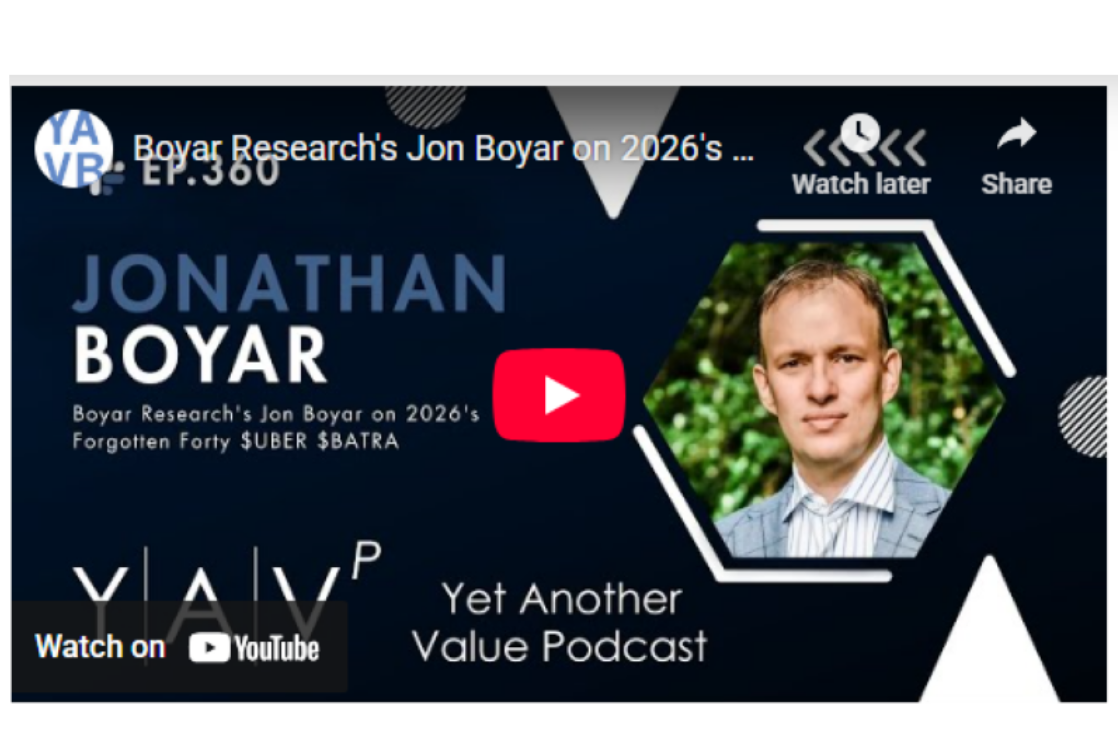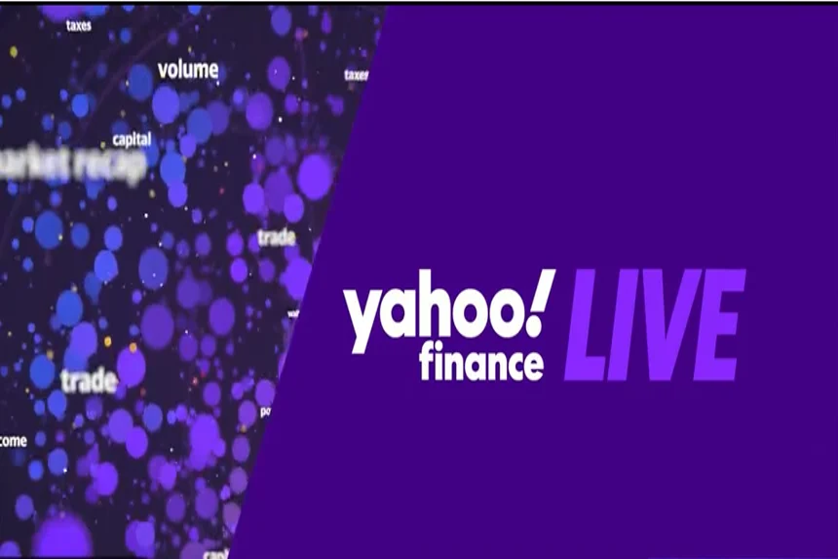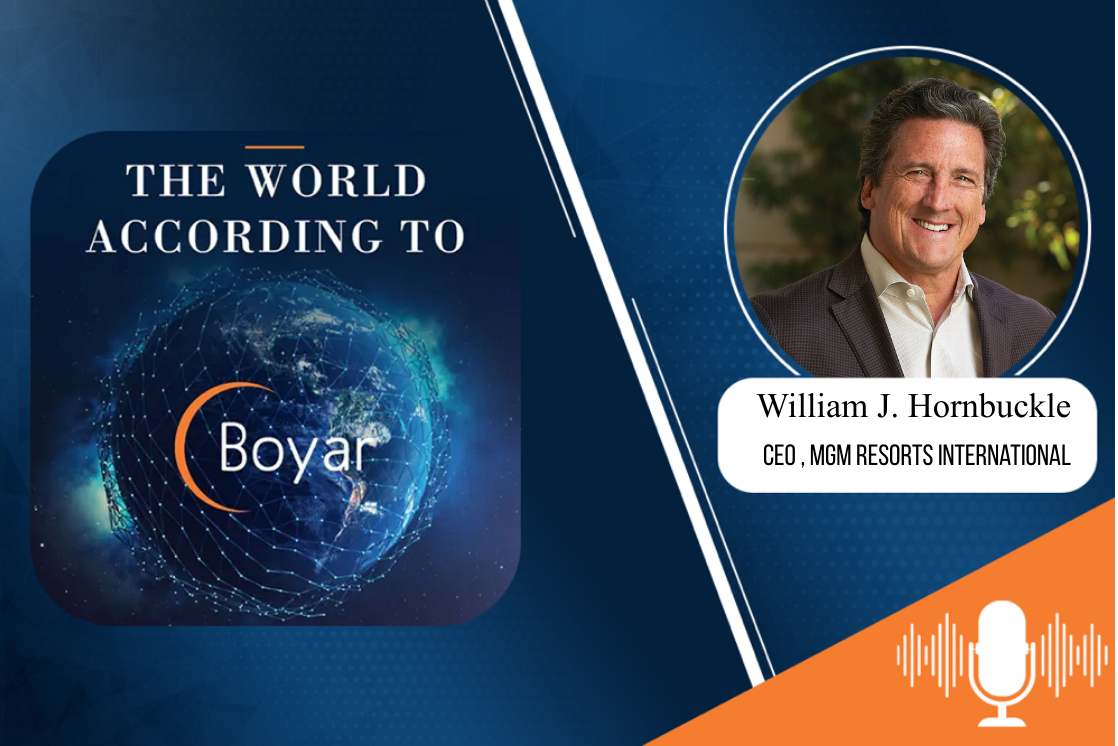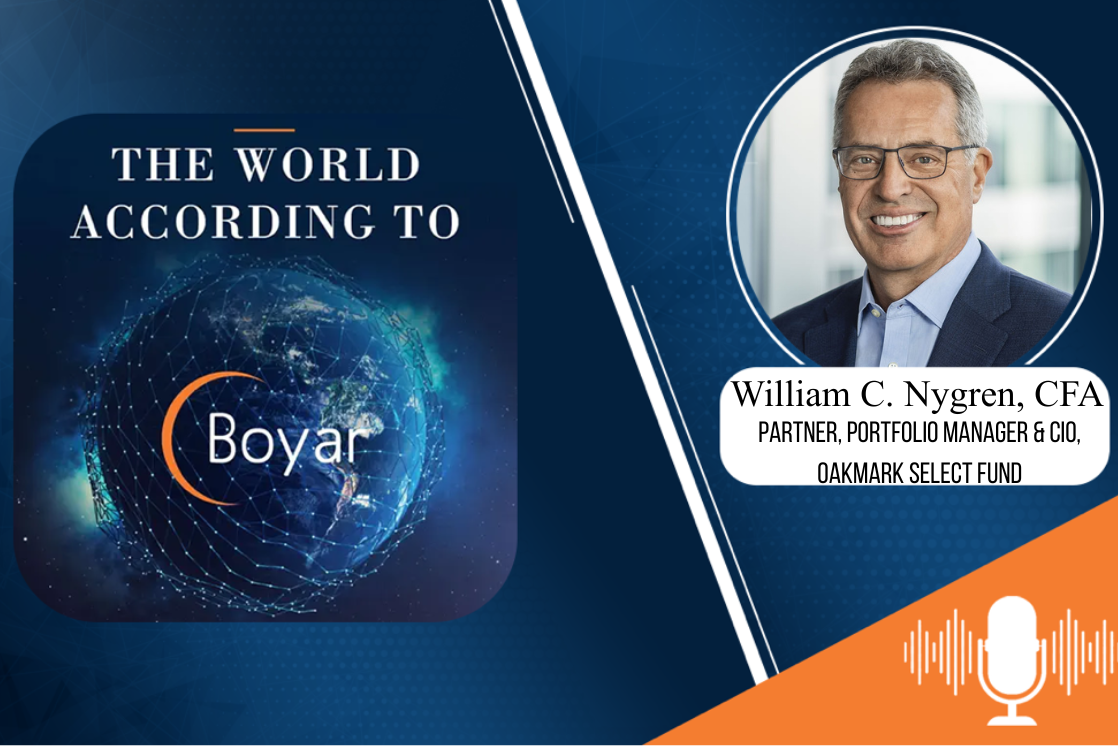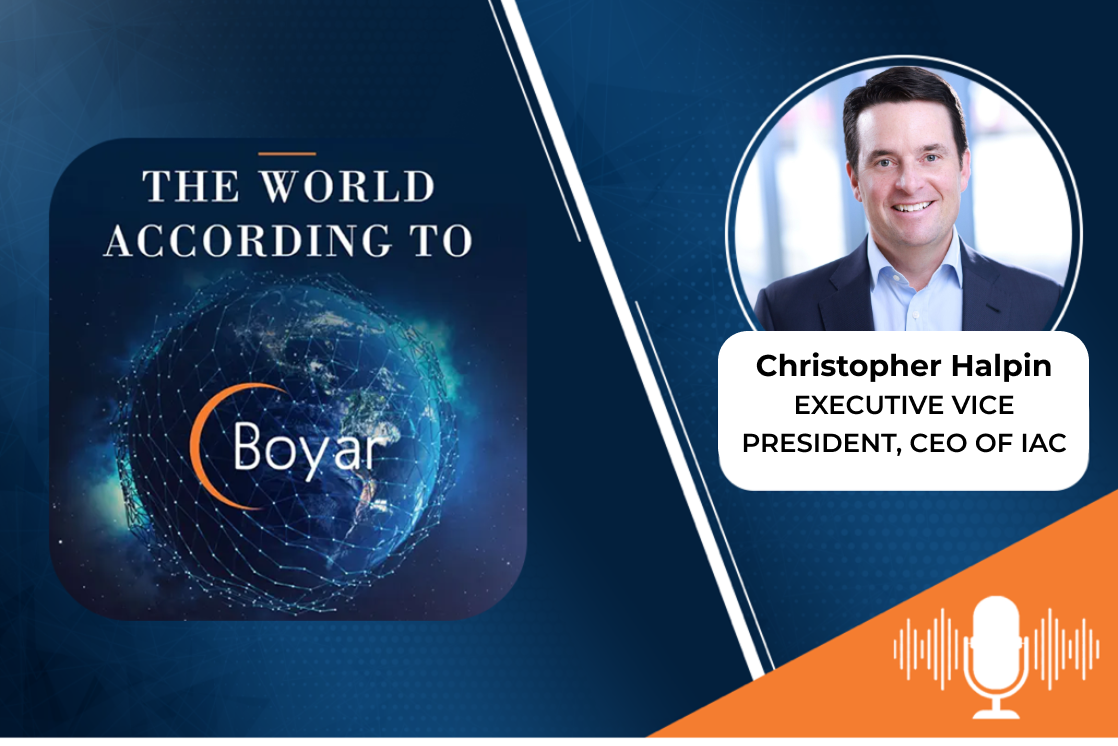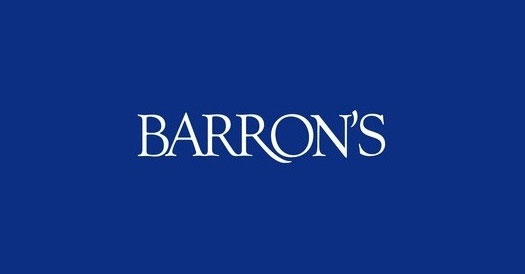Kenneth L. Davis, MD, President and CEO of the Mount Sinai Health System, on how to decrease healthcare costs without sacrificing quality of care and why drug pricing should be a trade issue.
Mellody Hobson, President & CEO of Ariel Investments, on the advantages of a diverse workforce and the changing media landscape. - Value Investing Podcast
John Rogers, Co-CEO of Ariel Investments on founding Ariel at the age of 24, the techniques he employs when investing on behalf of clients and more… - Value Investing Podcast
IAC CEO Joey Levin on why his company took a 12% stake in MGM, which companies within IAC he is most excited about, lessons learned from working with Barry Diller, and how he approaches capital allocation. - Value Investing Podcast
The interview discusses:
-
- How Dr. Davis led one of the greatest financial turnarounds in medical history;
- The reasons why healthcare keeps becoming more expensive along with solutions on how to decrease costs without sacrificing care;
- Why drug pricing should be a trade issue;
- Why the current patent system discourages pharmaceutical innovation;
- What “value based” medicine is and why insurance companies and hospitals should consider adopting it;
- Why the National Institutes of Health is so vital to drug discovery;
- His thoughts on CVS’s strategy of becoming an integrated health care provider;
- What serious healthcare problem he sees getting worse which he believes has the potential to bankrupt the entire Medicare system;
- And much more….
About Kenneth L. Davis, MD.
Kenneth L. Davis, MD, President and Chief Executive Officer of the Mount Sinai Health System, is widely recognized as a visionary leader who has guided the institution on a strong and dramatic growth trajectory. In 2013, the Mount Sinai Health System was formed by the combination of The Mount Sinai Medical Center and Continuum Health Partners, becoming one of the largest nonprofit systems in the country with $8 billion in revenue, 42,000 employees, eight hospitals, and more than 410 ambulatory practices throughout the five boroughs of New York City, Westchester, Long Island, and Florida. Prior to becoming CEO, Dr. Davis spent 15 years as Chair of Mount Sinai’s Department of Psychiatry. He was the first Director for many of the institution’s research entities, including Mount Sinai’s National Institutes of Health (NIH)-funded Alzheimer’s Disease Research Center, the Schizophrenia Biological Research Center at the Bronx Veterans Affairs Medical Center, the Silvio Conte Neuroscience Center to study schizophrenia, and the Seaver Autism Center for Research and Treatment. Additionally, he received one of the first and largest program project grants for Alzheimer’s disease research from the NIH.
Click Below to Read the Interview Transcript
Transcript Of The Interview With Kenneth L. Davis, MD.
Jonathan Boyar: (00:10)
Welcome to the World According to Boyar, I am your host, Jonathan Boyar. Today’s topic is the business of healthcare. Healthcare, by certain measures, is the biggest business in the US. It comprises almost 20% of our GDP and that number seems to be only going in one direction, up. Business owners, both big and small are impacted directly with rising insurance costs. Employees and consumers are seeing increasingly higher deductibles and copay’s. This is one of the major issues of the 2020 U.S. Presidential election where we are seeing some pretty radical ideas being proposed.
Jonathan Boyar (00:50):
So how does an investor profit from this? Is it by purchasing a company like CVS, which Boyar asset management owns, and we have written extensively about in our research service? Are there other ways? I wanted to find an expert to discuss the drivers of healthcare costs. Someone who not only understands the science behind what constitutes delivering quality healthcare at an affordable cost, but also a person who has demonstrated the business savvy of successfully navigating this increasingly complex ecosystem.
Jonathan Boyar (01:21):
To me, the choice was obvious. Dr. Ken Davis is the CEO of the Mount Sinai Healthcare System and led one of the most unbelievable financial turnarounds in medical history. I personally have a special fondness for this institution as my wife completed her residency at Mount Sinai and I have great memories of visiting her at Guggenheim Pavilion. In our wide ranging interview, Dr. Davis discusses why healthcare is so expensive, solutions on how to keep costs down, and countless other valuable insights that will be interesting to not only investors, but people who want more knowledge on this increasingly complex debate. Dr. Davis, welcome to the show.
Dr. Ken Davis (02:03):
Good to be here.
Jonathan Boyar (02:04):
Today Mount Sinai has over 42,000 employees, 8 billion in top line revenue, and an endowment without donor restrictions of around $2 billion. However, when you assumed your current role, the situation was, to put it mildly, dire. I believe you had two weeks of payroll left. Can you explain what you were drafted into?
Dr. Ken Davis (02:22):
Wow. Well, I was the dean and I had been the dean for about two months and the chairman of the board called me into his office and said, “we’re firing the CEO.” They had hired the CEO less than a year earlier, “and we’d like you to do both jobs.” I thought, wow, I’m mostly a scientist. This is not what I was trained to do, but like your wife and perhaps even more so, this institution had meant a great deal to me. When I was seven I came here for emergency surgery on Mother’s Day. I remember it like it was yesterday. Traffic was so heavy, my mother was panicked we wouldn’t get there in time. I was met at the curb by emergency workers who put me on a stretcher and the next thing I knew I was in an OR and they were operating on me.
Dr. Ken Davis (03:11):
I went to medical school here when it was just the second class and there were 40 students in the class. Except for six years that I spent at Stanford, this has been my whole life, I came back after Stanford and for the place to be in such a dire position as it was then and to be entrusted with turning it around seemed to me to be something of which there was really no decision. This is what I was going to do.
Dr. Ken Davis (03:38):
So I’m a scientist, I am data-driven and the first things that I asked was, what are the diagnostic related groups where we have a margin and what are the ones in which we’re losing money? And what I found out, that everybody knows who’s been in this business, is that complex surgeries are where the margin is and pediatrics, psychiatry, basically the inpatient stays that aren’t procedurally related, are where you lose money and that as of today, but it was the same before you lose money on Medicaid, you lose money on Medicare, you’ve got to make that up in commercial insurance. So we had a place that was swarming with consultants and those consultants were telling the management team how we were going to work this out. And their strategy was always expense reduction, expense reduction, expense reduction.
Dr. Ken Davis (04:36):
And they would say things like, “look, you don’t need an A level of cleanliness in the hospital, you could have a B.” And I said, “with the competition in New York, you think we can live with a B level of cleanliness? People will see a floor that looks a little dirty and they’ll say, could you imagine what the ORs look like?” So my conclusion was, no, we were not going to cut our way out of this problem. We had to grow the top line. So I generated a plan and the plan was we had to recruit and we had to recruit those doctors who are doing the complex surgeries that we weren’t doing. We have to recruit major surgeons who have reputations and practices. And I put that plan together and I said, I’ll need to go to the board and get approval to use whatever money is in the endowment that is unrestricted so I could generate the seed packages that would be necessary to attract the doctors and bring them to Mount Sinai.
Dr. Ken Davis (05:43):
And I remember when we had the board meeting, I presented my plan and some members of the board then turned to the consultants and they said, “what do you think of Dr. Davis’s plan?” And they said, as consultants would, they didn’t want to be hypercritical. They said, “well, it’s very interesting we understand it, but frankly we don’t believe in the revenue fairy.” So the board voted and the board voted unanimously to approve my plan and to unlock the money that was unrestricted in the endowment for me to use for recruitment. And as I was leaving, one of the board members turned to me and said, “you better be right because if you’re wrong, you’ll be the last CEO of Mount Sinai.”
Jonathan Boyar (06:33):
You’ve said that being a scientist really was the best preparation of becoming a CEO, what do you mean by that?
Dr. Ken Davis (06:40):
I was a data-driven person. I knew that to solve this problem, I needed facts, I needed data and I immediately went to our group who are in strategic planning, ironically had just been given layoff notices by the consultants and I said, “you’re staying and I need to know the margins on all these DRGs that are common.” And that’s what they gave me. And then we began to look at the data. Where are the expenses, where are the revenues and where are the margins?
Jonathan Boyar (07:12):
Roughly 62% of your patients are Medicare, Medicaid. For each Medicaid patient, you lose about 35 cents on the dollar, for Medicare, I think it’s about 15 cents.
Dr. Ken Davis (07:22):
That’s right.
Jonathan Boyar (07:23):
Clearly this isn’t sustainable, you said that you make some of it up from private insurance, but how did we get here?
Dr. Ken Davis (07:30):
You mean how did healthcare in general get here? No one can afford healthcare. The feds can’t afford their Medicare and their Medicaid, the state can’t afford its Medicaid. The employers can afford their premiums, the employees can’t afford their copays. So everybody wants to shrink what they’re paying to the payers. And when the vast majority of your payers are government, they’re the easiest ones to cut. They get the least push-back and the most voters are, that’s what they’re in favor of. So we have to find ways to survive.
Jonathan Boyar (08:06):
And what’s the biggest driver of costs in the system for you as a hospital? Is it nurses? Is it drugs, litigation?
Dr. Ken Davis (08:13):
It’s labor.
Jonathan Boyar (08:14):
By far and away?
Dr. Ken Davis (08:15):
Sure, labor costs. It’s a labor intensive business. You need the physicians, the specialists are expensive and it’s a very competitive area in New York and the need to staff places where there are very, very sick people, because as care has become more and more ambulatory, the people who come to the hospitals are your sickest people. They need the most staffing. So labor costs are very high.
Jonathan Boyar (08:45):
So now there’s a movement in medicine. If you go to a doctor, you pay for the visit to more of a value based approach and it’s something you’ve been outspoken about. It’s a revolutionary change. How does this get accomplished?
Dr. Ken Davis (08:58):
Well, an insurer or the government says you are taking care of primarily X amount of people and for every X, every one of those people we’re going to give you Y amount of dollars and that’s it. We’re going to give you that ahead of time, that’s what you get for the year. Your job is to manage those patients with that amount of money. So suddenly your incentive is to keep people well instead of fee for service medicine, which your incentive is to do anything you can do because anything you do you get paid for. That just drives up the bill. So this necessitates much more thought about how can I be prudent, how can I keep people well? Of course it has a downside too. And the downside is, you may do too little, but if you do too little, ultimately you pay a price because then they get real sick and you have a much bigger bill. So this changes the way we’re reimbursed, changes the way we conceptualize care and hopefully it can bring savings.
Jonathan Boyar (10:02):
I see how that could work for an insurance company, but for a hospital, how does that model work?
Dr. Ken Davis (10:08):
Well, if we’re paid a fair amount and if we are effective in keeping people out of the hospital or when they need care, doing it in the lowest level that we can and do it well. If we can keep people essentially healthy, we will wind up not having to spend down all that money that we’re given ahead of time.
Jonathan Boyar (10:33):
For this plan to work, basically do all physicians now have to be associated with a hospital?
Dr. Ken Davis (10:40):
No, not for physicians, but the hospital has to be worried about physicians who are not a part of their employee or have some incentive that is aligned with them because if were responsible for say, a particular patient and that patient goes to a doctor who is unaffiliated with us, has no connection to us, can’t read the medical records, they have no incentive to be as efficient as possible nor to find out what has already been done. So you may get redundant medical care, redundant diagnostic tests, unnecessary procedures, or that Dr. may feel he’s still, or she, in a fee for service world. But the difference is that the money that that doctor’s being paid is now coming out of our allotment for care for that patient. So we’re very worried when that patient winds up in an unaffiliated office.
Jonathan Boyar (11:40):
So scale for this must be tremendously important. I mean you’ve merged with hospitals a few times. Do you see more consolidation in this space?
Dr. Ken Davis (11:51):
Well, you’re right, scale critical. Think about this in the context of value based care in Manhattan. Let’s say Mount Sinai, before all its mergers was just this wonderful hospital in the Upper East Side. And one of our patients, who lives South of 34th street gets very ill and winds up in an emergency room of say, and I like them, NYU. Well, they don’t see our records, they don’t know what’s going on and they’re not in our risk pool, so what do they do? They repeat all the tests. They do everything that we’ve already done. They wind up again in fee for service medicine doing procedure after procedure and we couldn’t control it. What we needed was those people had a Mount Sinai facility to go to. So when they get sick with that scale, we lose them. We needed the scale to make sure they stay within our system. And that resulted in some now 400 ambulatory sites and eight big hospitals.
Jonathan Boyar (13:03):
The NIH, there’s a lot of mystery surrounding the organization and you’re an outspoken proponent of the importance of the NIH. Can you just briefly explain why they’re so vital in healthcare?
Dr. Ken Davis (13:15):
Critical. Big pharma has become drug development, not drug discovery houses. So where does the intellectual property come from? Where does the new ideas, the targets for new drug development, understanding fundamental pathophysiology, where does that come from? It comes from the academic medical centers, the large academic medical centers that receive a lot of NIH money. That in turn produces the targets, produces the pathway to new compounds. And at some point, those ideas are then transferred over to the big pharmas who then spend the money to put them in big clinical trials. But big pharma, even if it decided to redirect its money more into drug discovery, doesn’t have the depth of people, the kind of infrastructure of scientists and academics that you need to really come up with the most creative ideas and take the biggest risks.
Jonathan Boyar (14:16):
And the way patent law is, it really incentives big pharma to have is what you’ve called and other people called, me too drugs.
Dr. Ken Davis (14:26):
Absolutely, and here’s why. You would think 20 years is a long time for a patent, but in fact when you figure out how long it takes to develop a truly novel compound for a really bad disease, you suddenly begin to calculate something like this. I want to develop a drug for Alzheimer’s disease. I find a molecule, I patent that molecule, now I’ve got to show that that molecule is working in my laboratory tests, desktop. Working in my animal models, then is not toxic in my animal models, then it’s not toxic in my first group of people. Then I turned to what’s called phase two studies, which is a little proof of concept, but it’s hundreds of patients. Then I moved to my phase three studies, which are the pivotal studies and if it’s for slowing the course of Alzheimer’s disease, then I enroll a lot of people who are potentially high risk for Alzheimer’s disease because of their genetic code, but they don’t have it yet. They’re complaining a little bit about their memory and I wait to see how many convert over into true Alzheimer’s.
Dr. Ken Davis (15:37):
That’s a multi multi year study and I probably don’t want to do though two at the same time because they’re very expensive so I do it sequentially. By the time all that is done and I finally have a drug that may slow the course of Alzheimer’s, I could have easily used 15 years of my 20 years. So then what happens? I’ve got five years left, which is also the amount of market exclusivity that you would get, data exclusivity for my filing with the FDA. So I’ve got five years to get back all that money, all that investment.
Dr. Ken Davis (16:12):
In contrast, let’s say I decide what I really want to do is make another H2 blocker for the stomach. I know where to go, I know the target. I can think very quickly through how I can get this thing into development. I have a good idea it’s going to be safe. So what’s my problem? My problem is I got a market to compete with, so instead of spending my money on R&D, I spend my money on marketing. That encourages me two drugs unless we get some kind of flexibility in patent law around encouraging what is truly innovative and discouraging, what are me too’s, we’ve got a business model that keeps us from really developing the breakthroughs that we need and we really have to take a hard look at that one.
Jonathan Boyar (17:01):
One that’s really fascinating and shows, I guess the importance of the NIH, is I’m assuming they’re involved is ketamine that actually happened at Mount Sinai. As far as I know, there hasn’t been a revolutionary drug for depression since the mid eighties with Prozac, there hasn’t been a new mechanism, I think, of action is the term, but within Mount Sinai you developed trials and I don’t know if it’s come, I believe it’s come to market.
Dr. Ken Davis (17:27):
Oh yes.
Jonathan Boyar (17:28):
Can you explain how that happens?
Dr. Ken Davis (17:30):
Sure. Let me go back. In fact, the mechanism of action for antidepressants is to keep the chemicals, the neurotransmitters between neurons around a little longer or make them more effective. That was accidentally discovered in the 50s and whether you increased norepinephrine, which is one of those neurotransmitters, whether you increase serotonin, which was the other one, these were all essentially the same drugs. So Prozac wasn’t different in the 80s, it’s just a drug we recent more recently remember. Ellivil, way back in the fifties, sixties. So there was an observation by just some very smart clinicians that ketamine, a drug of abuse, was seen to be mood elevating. And the question was how could we validate that in fact it had a sustained effect and that it was safe and that it wasn’t addictive and it wouldn’t be a drug of abuse. That took a lot of very smart, smaller clinical trials that demonstrated that in fact, the effect could be sustained, that the dose wasn’t a dose of abuse and that the mechanism of administration could be safe.
Dr. Ken Davis (18:49):
With that information and a use patent, Mount Sinai and collaborators were able to go to drug companies and say, “do you want to develop this?” And they did, but in that case, what it took was a lot of smart clinicians who were in the field of translational science taking, in this case, compounds that were out there and using them for other indications. More traditionally, drug development is about finding a new target and figuring out what molecule will be on that target to change the pathophysiology going forward.
Jonathan Boyar (19:28):
So for Mount Sinai’s effort of doing this, do they actually get rewarded? Is this something-
Dr. Ken Davis (19:34):
Yes, yes, we get a percent of a sales from Johnson and Johnson on ketamine.
Jonathan Boyar (19:39):
And do the taxpayers get reimbursed?
Dr. Ken Davis (19:41):
You ask a terrific question, which is this, if NIH money is generating the kind of intellectual property that leads to drug discovery, what should be the return on investment for taxpayers who are funding that and is a question that is rarely addressed, but I think should become a part of the discussion around drug pricing and it hasn’t yet entered the issue of drug pricing. I don’t hear a lot of people saying, wait a minute, that drug that you’re now selling for X thousands of dollars, where’d the science come for that? Who paid for that?
Dr. Ken Davis (20:28):
Now you know that there’s the Bayh–Dole law and what Bayh–Dole does is it allows places like Mount Sinai to take inventions that come from NIH funded grants and to patent them and then in fact to license them to big pharma. The government has the right to buy back, to drop in and to say, wait a minute, we’re taking this back or we’re going to sell that patent because of what your pricing it to to a competitor. They’ve rarely, rarely done that, but they have the power to exercise that authority, which could have an impact on how some of these drugs ultimately get priced.
Jonathan Boyar (21:16):
I hope you’ve been enjoying the interview with Dr. Davis. To be sure you never miss another World According to Boyar podcast, please be sure to follow us on Twitter, @boyarvalue. Now, back to the show.
Jonathan Boyar (21:33):
You had briefly mentioned trade issues. They’re in the headlines for a variety of reasons and you’ve discussed, drug pricing should be a trade issue. Can you just further elaborate on that?
Dr. Ken Davis (21:44):
Well, think about this. In single payer systems, governments sit down with big pharma and they say, we’re going to pay X for this drug. This is what we’re going to pay no more, no less. You want to sell it in our country, this is what we’re going to pay you. End of story. Drug companies argue they have no margin when they do that. So they come to the US where we don’t sit down and make that negotiation and they price it how they want.
Jonathan Boyar (22:10):
And sorry to interrupt you, why can’t Medicare do that?
Dr. Ken Davis (22:13):
It’s not legal.
Jonathan Boyar (22:14):
What’s the rationale?
Dr. Ken Davis (22:15):
The rationale is we believe in a free market. We believe in capitalism and we believe in a return on investment for the drug company that should be fair for all they’ve put into it. And I believe that at least decades ago when I was working with big pharma and helping them develop Alzheimer’s drugs, there was a social contract and the social contract went something like this, we want everybody, the drug company would say, we want everybody to be able to afford this drug. And as a consequence, you’re not going to turn around and then negotiate one price for all of Medicare. So we’ll be fair and you’ll be fair and we’ll move on because the rest of the world isn’t.
Dr. Ken Davis (22:58):
Well maybe that social contract’s been broken and maybe there are some people in big pharma who just want to price it where they want to price it and good luck if you can afford it. Maybe that overstates the case, but I think that the circumstance has brought on big pharma it’s own worst enemy, which is the question of well, shouldn’t Medicare have the right to negotiate drug prices with you? And if they got that right and that legislation is before Congress now, it changes everything. So then pharma can come back and say, we don’t have enough money to invest in science and it’s going to cost us in innovation.
Dr. Ken Davis (23:39):
Before we get to that, what I would like to see happen is sit down in trade negotiations and say, “wait a minute, US citizens aren’t going to have to pay for all these drugs, rest of the world, you got to pay too.” And then we have to sit down with the pharmacy CEOs and say, “if you get more money from the rest of the world, decrease what Americans have to pay so that it’s still fair. Don’t just put it in your pocket.” So there’s a long way to go, but I think to at least shine light on the fact that this is unequal around the world and should be a part of our trade negotiations is a good idea.
Jonathan Boyar (24:17):
So when the polio vaccine came out, it was essentially free. The cost of polio at the time to society was enormous, legend has it that Jonas Salk refused to patent the vaccine because he said, “would you patent the sun?” The actual truth to why he didn’t patent it is open to debate and there’s a lot of nuance behind that, but it’s a nice story nonetheless. Today, drug companies base their pricing partially on how much money they save the system and that’s why you see $80,000 price tags for drugs. What’s a good middle ground? How do you do this?
Dr. Ken Davis (24:50):
Well, it’s been suggested that you can do it based on how effective the drug is. I think that’s often hard to determine. I think it might be fair to have transparency to open up the books, to talk about, we’ve had this many failed compounds in this class. This is how much we’ve invested, a fair return would be X. We want that fair return going forward plus inflationary adjustment, but we haven’t had that kind of transparency yet.
Jonathan Boyar (25:20):
Speaking of transparency, PBMs, they’re an easy political target. They’re complex, they hold a lot of power. From your perspective as a provider and a large employer, how do you view the debate and do they have a positive influence? Do they have a reason to even exist?
Dr. Ken Davis (25:36):
You know, I just don’t know enough to really be knowledgeable about that other than to say, every time we have another hand in this line of potential profit, we’re just making it harder and harder for patients to pay for their drug and the most efficient way it would seem to me would be if we could get the best prices from pharma directly to the patient with the insurance company is perhaps the intermediary. I don’t know why we have to, but I’m sure there are good arguments for PBMs, but I just regret the fact that we have so many profit centers in line here that are getting some return on what is essential medications for people’s survival.
Dr. Ken Davis (26:23):
To return to your Salk vaccine, could you imagine if when we all, well, at least when I was, I remember seven years old and lined up to get the Salk vaccine and my parents were rejoicing, because in the summers we were all petrified that we’d wind up with some polio. Could you imagine if at the door you checked in you had to give them a couple thousand dollars? How many people, when I got the shot in 1954, would have said, “we can’t afford this. How can we do this?” Or could you imagine if the people who went to market with it said, as you pointed out, “do you realize how much money we’re going to save the healthcare system?” You know? Well, they’re not saving my mother. It’s not my mother and father’s money. I mean, they couldn’t afford it.
Jonathan Boyar (27:06):
We’re a money management firm and one of the companies we’ve invested in and written up has been CVS. They’ve changed their business model drastically. They’re not only a drugstore, they’re also a PBM. They’re also a major insurer, so they’re now really incentivized to take costs out of the system and they now have a strategy of preventive care, maintenance, chronic disease treatment. They’re going to have centers where people can go in and get seen by nurse practitioners. Do you think this is a good idea? Do you think this will help with the strain on large hospitals like yours and lower costs?
Dr. Ken Davis (27:41):
Time will tell. I don’t know. Certainly in theory you can see how an integrated system like that could save the system money on the other hand and integrate a system like that could also add expense to the system depending on how they wanted to price things. I worry about the kind of people on the front lines who will be in those places, staffing those facilities. How knowledgeable will they be about disease? How well will they be able to pick up some of the subtleties that suggest, by the way, that breathing problem you’re having, it’s a little more serious than you think. We better send you somewhere else. I don’t know if they’re going to afford the kind of quality care that you’d want. This isn’t like going to Walmart and just picking something off the shelf. You really need good people and I don’t know how they’re going to staff it and I don’t know what kind of doctors, if they’re going to get doctors at all, are going to be in the front lines.
Jonathan Boyar (28:35):
You’re an expert in Alzheimer’s disease. You hear a lot about the opioid epidemic, cancer, diabetes, all of these have tremendous cost to society. You hear a lot less about Alzheimer’s. However, the Societal cost is enormous. Can you give us some perspective, especially now with as the baby boomers are aging?
Dr. Ken Davis (28:53):
It’s an accident waiting to happen. I mean this can bankrupt the rest of the Medicare system. The percentages of people over age 85 who are demented is phenomenal and the system just can’t afford it and they don’t have the facilities to handle it so that what we badly need is a drug that can slow the progression of Alzheimer’s. The brain changes that happen in the Alzheimer’s patient happened 25 years, start 25 years before you’re symptomatic and we can identify those changes with tests now. What we need is a drug that we can start to administer 25 years earlier that say, would slow the progression by half, so that instead of average age getting it at 80 or 82 you’re now going to get it at 102 and you’re going to have a lot fewer people with dementia. Unfortunately, a myriad of drugs have failed and we’re still waiting for something that is really going to be efficacious here.
Jonathan Boyar (29:53):
Do you think it’s feasible?
Dr. Ken Davis (29:55):
To find the efficacious agent? I think the science can definitely provide that.
Jonathan Boyar (30:00):
How much are we talking about in terms of costs that have gone into this?
Dr. Ken Davis (30:03):
At this point? Billions and billions of dollars. The question is when we come up with a drug, can you imagine if it’s only marginally efficacious and the cost is $25,000 a year? That would be outrageous and it could be worse. So what we’re looking for is going to have to be a truly efficacious compound, not marginally efficacious, that we’re going to have to take for decades, that’s going to have to be fairly priced so that we don’t bankrupt the Medicare system just by the drug that’s going to slow Alzheimer’s disease rather than Alzheimer’s disease itself.
Jonathan Boyar (30:42):
Dr. Davis, I want to thank you for your time and the insights you gave. Mount Sinai is an organization that relies on donations in order to continue to deliver unbelievable services. If you’re interested in learning more on how you can help this wonderful organization, please visit www.mountsinai.org. To be sure you never miss another Boyer podcast, please follow us on Twitter @Boyarvalue. Until next time.
Important Disclosures. The information herein is provided by Boyar’s Intrinsic Value Research LLC (“Boyar Research”) and: (a) is for general, informational purposes only; (b) is not tailored to the specific investment needs of any specific person or entity; and (c) should not be construed as investment advice. Boyar Research does not offer investment advisory services and is not an investment adviser registered with the U.S. Securities and Exchange Commission (“SEC”) or any other regulatory body. Any opinions expressed herein represent current opinions of Boyar Research only, and no representation is made with respect to the accuracy, completeness or timeliness of the information herein. Boyar Research assumes no obligation to update or revise such information. In addition, certain information herein has been provided by and/or is based on third party sources, and, although Boyar Research believes this information to be reliable, Boyar Research has not independently verified such information and is not responsible for third-party errors. You should not assume that any investment discussed herein will be profitable or that any investment decisions in the future will be profitable. Investing in securities involves risk, including the possible loss of principal. Important Information: Past performance does not guarantee future results.
Never miss another podcast click here to subscribe today!
Available wherever you download podcasts
About The Boyar Family Of Companies
Boyar Asset Management
We have been managing money since 1983 utilizing our proprietary in-house value-oriented equity strategies. We manage money for high net worth individuals and institutions via separately managed accounts. To find out how we can help you with your money management needs please click here
Boyar Research
Since 1975 we have been producing independent research on intrinsically undervalued companies across the market capitalization spectrum and in a wide variety of industries using a business person’s approach to stock market investing. To find out how we can help you with your research needs please click here
Mellody Hobson, President & CEO of Ariel Investments, on the advantages of a diverse workforce and the changing media landscape. - Value Investing Podcast
John Rogers, Co-CEO of Ariel Investments on founding Ariel at the age of 24, the techniques he employs when investing on behalf of clients and more… - Value Investing Podcast
IAC CEO Joey Levin on why his company took a 12% stake in MGM, which companies within IAC he is most excited about, lessons learned from working with Barry Diller, and how he approaches capital allocation. - Value Investing Podcast


